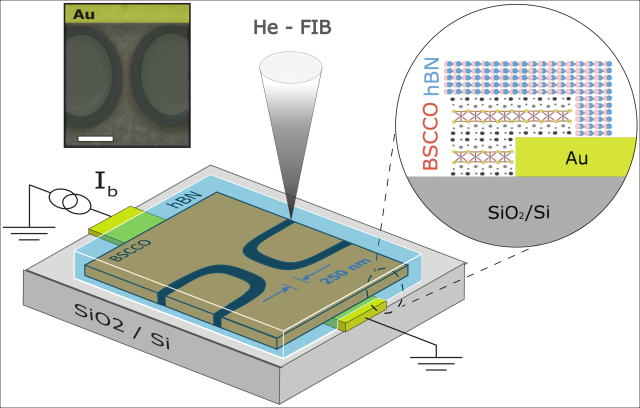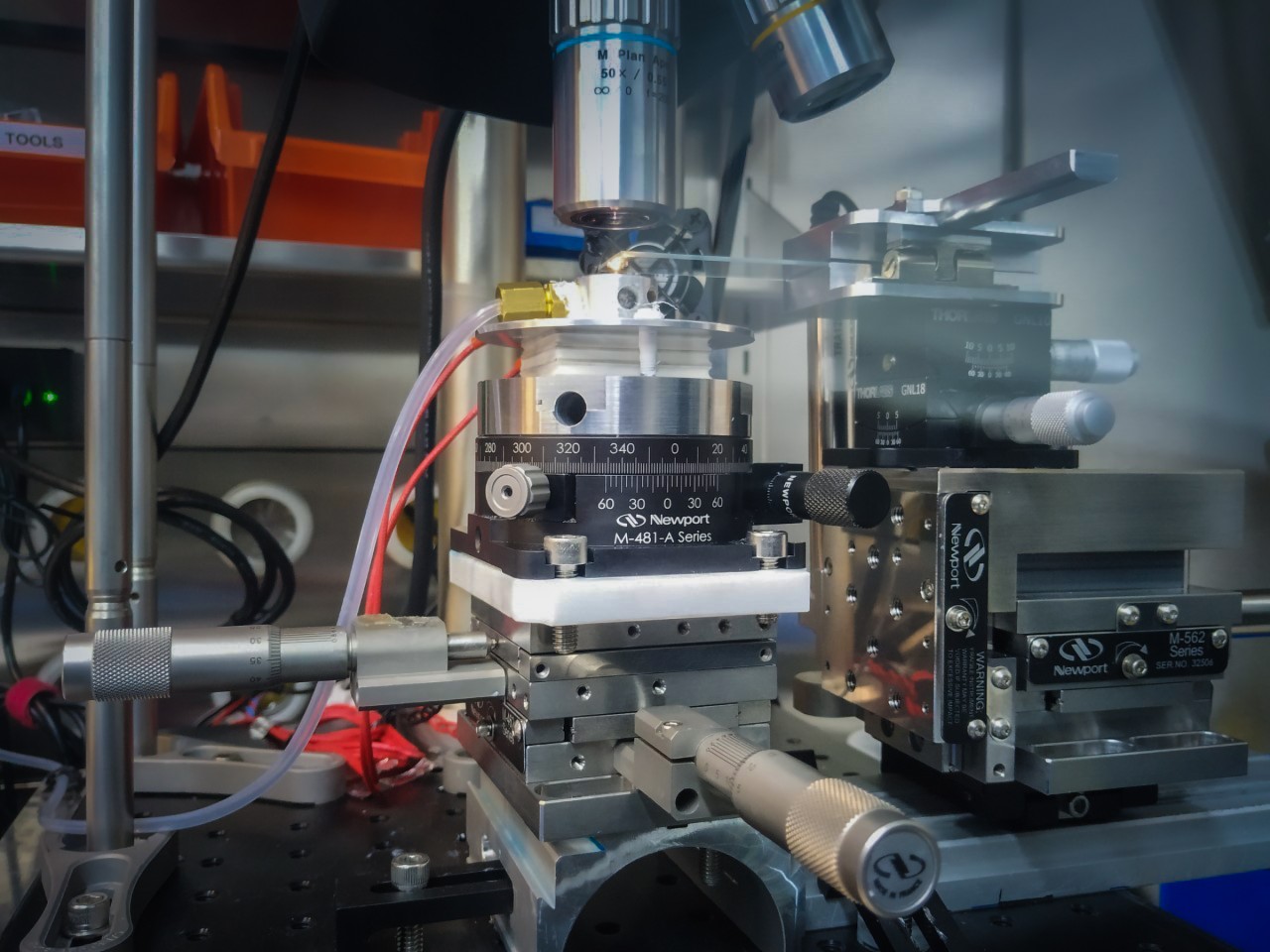19 April 2023
High-Temperature Superconductors Boost Next-Generation Quantum Technologies
A team of international researchers led by Dmitri Efetov, MCQST member and Chair of Experimental Solid State Physics at LMU München, demonstrates quantum detectors based on high-temperature (high-TC) superconductors. The results offer new impulses for next generation quantum technologies. The paper was featured in a News & Views article by Nature Nanotechnology.
Photonic quantum technologies rely on the accurate generation, manipulation, and detection of photons - a single quanta of light. These technologies hold promise for high-speed optical communications and quantum-secure information protocols, but still face several roadblocks in their implementation. One such roadblock lies in the detection of single-photons in telecom wavelengths (1550 nm), where state-of-the-art superconducting single-photon detectors are based on low-temperature superconductors. These detectors need to be operated at temperatures below 3 Kelvin (K), approximately the temperature of outer space. To reach such low temperatures, complex and expensive cryogenic tools are required, limiting their applicability in photonic quantum technologies.
An appealing alternative is the use of high-TC superconducting materials which can be used, for example, using a liquid nitrogen dewar (77 K). The use of these materials in quantum devices, such as single-photon detectors, has proven extremely challenging due to their chemical instability. In this work, the researchers employed advanced fabrication techniques to achieve this prospect and demonstrated single-photon detection at telecommunication wavelengths at a record temperature of 20 K.
 @ Quantum Matter Group
@ Quantum Matter Group Excellent Superconducting Properties
The resulting devices exhibit excellent superconducting properties, as they remain superconducting up to temperatures between 60 K and 80 K. These detectors are operated using an electrical current that sets the BSCCO nanostructure at the edge between its superconducting and normal phase. Then, the absorption of a single-photon (from a laser source at telecom wavelength) can trigger a transition between the two phases which is then electrically detected as a click or photon detection. Inspecting the photon counting statistics as a function of laser power, these detectors were found to be single-photon sensitivity even at moderate cryogenic temperatures like 20 K.
This result represents a milestone in the application of high-TC superconducting materials for quantum technologies as a whole. Further improvements might provide increased detection efficiency, faster detection rates and architectures that are more scalable for these single-photon detectors. "These findings break the glass ceiling that has precluded the use of high-TC superconductors in quantum devices and quantum technologies as a whole”, says Rafael Luque-Merino, first author of the paper.
Publication
Two-dimensional cuprate nanodetector with single telecom photon sensitivity at T = 20 K
R.L. Merino, P. Seifert, J. D. Retamal, R.K. Mech, T. Taniguchi, K. Watanabe, K. Kadowaki, R. H. Hadfield and D.K. Efetov.
2D Mater. 10 021001 (2023)
DOI:
10.1088/2053-1583/acb4a8
News & Views Article in Nature Nanotechnology: Superconducting single-photon detectors get hot
Contact
Rafael Luque-Merino
PhD Student
Experimental Solid State Physics - Quantum Materials
LMU München
rafael.luque[at]lmu.de
Prof. Dr. Dmitri Efetov
Chiar of Experimental Solid State Physics - Quantum Materials
LMU München
dmitri.efetov[at]lmu.de
